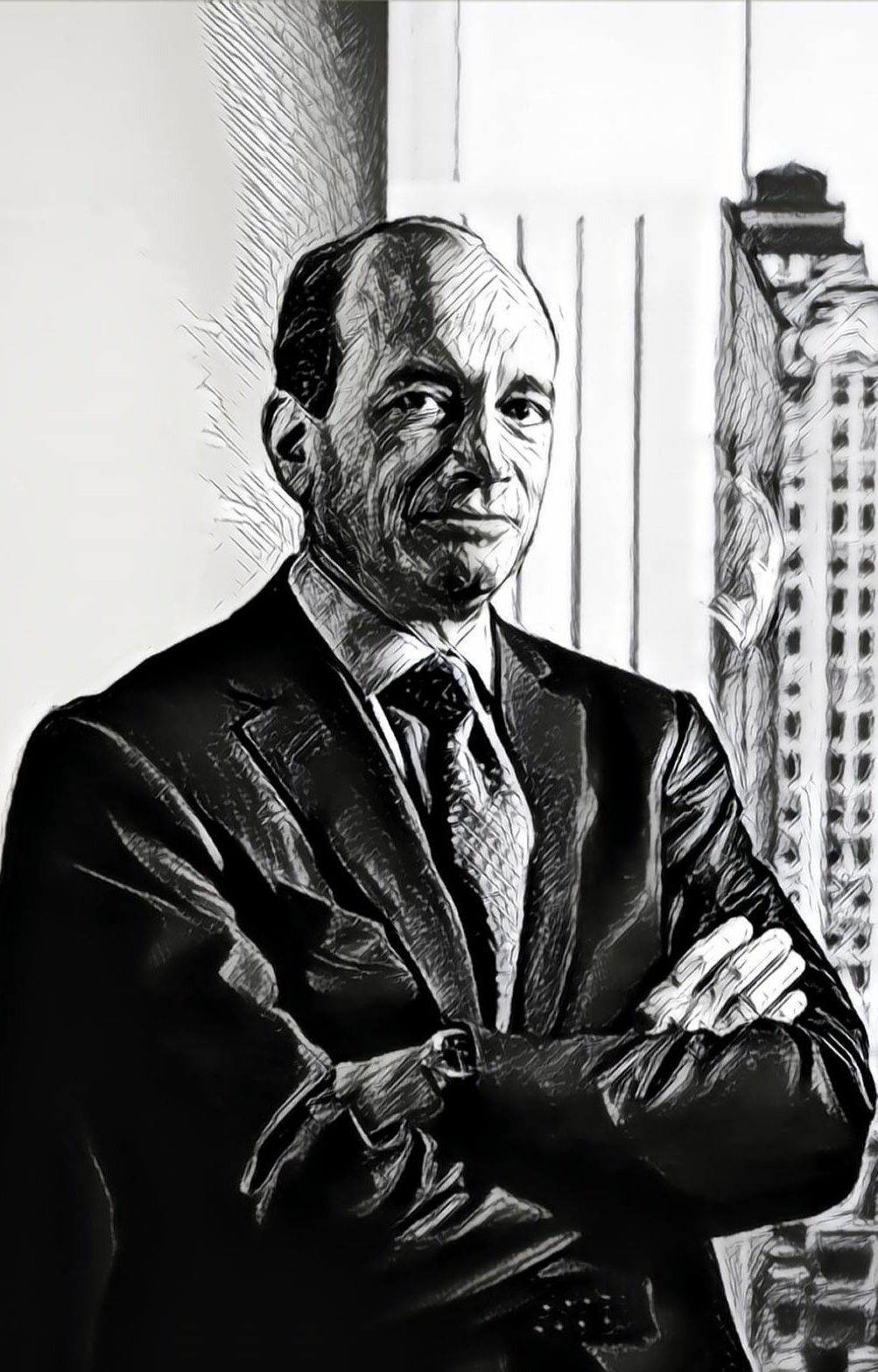The original article was written by Thomas Niel.
What is Bill Ruane's Sequoia Fund? Is Ruane’s strategy anything like Seth Klarman's investment strategy? And, how is it connected to Warren Buffett, the greatest investor of all time?
When Warren Buffett officially "retired" from managing outside money in 1969, he did so on a high note, turning his attention to the permanent capital base that became Berkshire Hathaway.
While Buffett wound down his fund, many of his limited partners still were interested in investing in a value-oriented fund. Buffett gave his investors a choice: they could either receive shares in the companies the partnerships controlled (Berkshire, Blue Chip Stamps, etc.) or receive a cash-only distribution.
For investors who selected cash, Buffett referred them to just one place: Bill Ruane’s Sequoia Fund.
But why did Buffett endorse Bill Ruane’s Sequoia Fund above all the other “Superinvestors of Graham-and-Doddsville”?
Read on to learn why Bill Ruane’s Sequoia Fund was Buffett’s top choice for his former clients!
Bill Ruane Sequoia Fund: How It Earned Buffett’s Referral
It’s not every day you open up a fund management business and right off the bat receive referrals from an established investor.
But that’s how it happened with Ruane. Of course, there is more to the story:
William Ruane’s life sounds very similar to Charlie Munger’s: born in the mid-1920s, Ruane worked as an electrical engineer after World War II. Looking for a career change, he attended Harvard Business School, where he developed a passion for investing from reading Graham and Dodd’s Security Analysis.
Ruane began his investing career at Kidder, Peabody. He continued his studies by taking Graham’s Columbia course, where he met Warren Buffett.
The two kept in touch for the next 20 years. While managing money at Kidder, Peabody, Ruane built a strong reputation for generating above average returns (albeit with a small capital base).
When Buffett decided to retire from fund management and invest via permanent capital (Berkshire), he knew some of his partners preferred to continue investing in a fund-type structure.
Respecting Ruane’s knowledge and track record as a value investor, as well as his strong character as a professional money manager, he was Buffett’s only choice for a worthwhile successor for his investors.
He sold Ruane on the idea of launching his own shop, and Ruane got the ball rolling. Partnering with Rick Cuniff, the two launched an eponymous firm, and within a year had set up their first mutual fund (The Sequoia Fund).
How Sequoia Became A “Rock Star” Value Mutual Fund
We own quality businesses run by quality people that can compound their earnings rapidly. We hold these businesses over a long horizon with the mindset of a long-term business owner. We buy them for less than what a conservative business person would pay for them. We focus on our best ideas, while avoiding excessive concentration. All along the way, we strive to make thoughtful, rational decisions based on intensive primary research. At the core of our strategy is a belief that if we pay attractive prices to own businesses that are higher-quality and faster-growing than the average S&P 500 company, then over the long term our portfolios should earn a higher return than the S&P 500 Index with less fundamental risk.— Fund Overview, The Sequoia Fund
As stated in The Superinvestors of Graham-and-Doddsville, Buffett put the barometer of Ruane’s success at 4 percentage points above the S&P’s return.
Ruane successfully beat this metric, even as the fund grew into a multi-billion dollar portfolio.
Bill Ruane’s Sequoia Fund became one of the best performing mutual funds in the industry.
Since its inception in 1970, The Sequoia Fund has materially outperformed the S&P 500.
- $10,000 invested when the fund first started would have grown to $4,223,193 today.
- $10,000 invested in the S&P 500 would have grown into $1,354,116.
Bill Ruane’s Sequoia Fund generated these market-beating returns not from timing the market and chasing trends, but by following a simple value strategy very similar to Buffett’s strategy from the 1970s onward:
- Focusing on Long-Term Investing: In the short term, the market is a voting machine; over the long term, it is a weighing machine. Like Graham, Buffett, and other “Superinvestors,” Bill Ruane’s Sequoia Fund bought stocks trading below intrinsic value, holding them long enough for the market to appreciate their inherent value.
- Holding to Solid Criteria that Separates the Wheat From the Chaff: The Sequoia Fund practiced the “wonderful businesses at a fair price” vein as opposed to old school “cigar butt” investing. The Sequoia Fund targeted companies with a competitive advantage (“moat”), quality management, and a long-term focus on compounding value for shareholders. Like with Berkshire, this strategy fit its larger capital base.
- Going Beyond the Numbers When Conducting Due Diligence: Crunching the numbers was only the start of Sequoia’s due diligence. Sequoia utilized Philip Fisher-style “scuttlebutt” information to flesh out the pros and cons of an investment idea. The fund would spend months, even years, conducting this exhaustive due diligence before taking a position. This resulted in a high-conviction idea portfolio.
- Practicing “Concentrated Value”: Sequoia was not one to spread its bets widely; its high conviction mantra meant a portfolio made up of as few as 10 stocks. The fund is more diversified today, but the fund is still more concentrated than average (top 10 holdings make up 65% of the portfolio).
While the fund’s approach differs from our approach to event driven investing, it succeeded by focusing on the most important factor: market-beating returns from a simple value strategy.
Bill Ruane’s Sequoia Fund did not chase macro trends or try to “predict the unpredictable.” Instead, it carefully selected high-quality stocks that had not been fully valued by the markets.
This approach is much more challenging than our event driven strategies, but if done right can still generate market-beating returns.
Bill Ruane Sequoia Fund: Finding Success with “Wonderful Businesses at Fair Prices”
It is interesting to see how The Sequoia Fund’s meteoric rise mirrors Buffett’s transition from cigar butt investor to moat-oriented investor.
Ruane was an early Graham devotee, but Sequoia’s success was built on investing criteria oriented towards “wonderful businesses at fair prices.”
In contrast to Walter Schloss and other “cigar butt” style value investors, Ruane was managing a larger sum of money and could not build meaningful positions in those more illiquid names.
By adopting a “wonderful businesses at fair prices” philosophy, he was able to use highly developed criteria and exhaustive due diligence to find mid cap and large cap stocks undercovered and undervalued by the market.
Sequoia took concentrated positions in these stocks and held them for long periods.
Successful buys in the 1970s included The Washington Post Company (a famed Berkshire holding), the Interpublic Group, and Ogilvy and Mather.
The ’80s and ’90s brought more runaway successful investments, including Kraft, Sara Lee, Capital Cities Broadcasting (another major Berkshire holding at the time), Fifth Third Bank, Johnson & Johnson, and Harley-Davidson.
It may seem odd that Ruane was able to crush the market with such blue chip names, but it is easy in hindsight to see it that way — the larger companies Ruane invested in were gems hiding in plain sight, well-known stocks that were erroneously undervalued by the market.
Beyond Returns: How Bill Ruane’s Sequoia Fund Stood Out
The Sequoia Fund’s “rock star” status goes beyond its market-beating returns.
In an industry with a spotty reputation for integrity, Bill Ruane’s Sequoia Fund operated with the honesty and availability that Buffett has given to his investors (both in the partnerships and at Berkshire).
It is fair to say mutual fund managers have interests not directly aligned with their investors. This is obvious, given their fee structure is asset-based as opposed to performance-based.
This makes it all too easy for fund managers to focus more on appearances than actual performance.
Many mutual funds are “closest-indexers,” building portfolios that correlate with the S&P 500 and other indices — albeit statistically with returns below the benchmark.
Given fund managers always earn their 1% asset management fee, mutual fund managers are comfortable with lackluster-to-average performance relative to the markets-at-large.
Rising above the moral hazard caused by this business model, Sequoia understood putting the investor first was the key to long-term success in the mutual fund industry.
Decades ahead of the competition, Bill Ruane’s Sequoia Fund prided itself on sound shareholder communication, prudent fund governance, and a low-cost, low-turnover philosophy.
Sequoia’s straight-shooter approach mirrors the way Buffett conducts business at Berkshire and shows how in the long run, character is paramount when selecting a successful fund manager.
Post-Ruane, Sequoia Fund Faces Headwinds Maintaining His Legacy
William Ruane passed away in 2005, but The Sequoia Fund is still in operation. However, the years subsequent to his death have not been as successful.
Under the aegis of Robert Goldfarb and David Poppe, Sequoia has had to adapt its strategies in order to keep up with changing market dynamics and the larger sums of money (billions) under management.
The accessibility of information and the automation of the markets has made it harder to find undervalued stocks in the mid-to-large cap space. The small cap markets continue to be inefficient due to being too small for more institutional investors — a primary reason why individual investors can gain an edge focusing on small cap value stocks.
As a result, Sequoia’s fund managers have tried to fit what worked in the past into the current market environment — with devastating results.
For example, let’s take a look at Sequoia’s investment in Valeant Pharmaceuticals.
Valeant looked like it had a winning strategy rolling up existing drug makers and raising prices.
However, a series of expensive acquisitions and an accounting scandal caused the “story stock” to lose its luster.
Sequoia invested heavily in Valeant as the stock soared to record highs, resulting in a highly concentrated position. This juiced up Sequoia’s returns in the early 2010s but had the opposite effect when Valeant shares collapsed.
Sequoia lost billions after exiting its position in Valeant. To be fair, Sequoia was not the only respected investor to be seduced by Valeant’s siren call. Bill Ackman, John Paulson, and others took a bath from their failed investment in Valeant.
Valeant likely would not have been an investment idea endorsed by Bill Ruane.
At first glance, Valeant looked like a likely multibagger. But below the surface, Valeant was an unsustainable financial engineering scheme, an investment idea that could work for a quick-buck artist but not an appropriate fit for Sequoia’s long-term portfolio.
The Valeant episode gives us insight into what can happen to a fund with an impressive track record that no longer has its famed captain at the helm — an important warning to consider whenever Buffett is no longer running Berkshire Hathaway.
Bill Ruane Sequoia Fund: Success Demonstrates How Simple Value Strategies Lead to Big Returns
Bill Ruane’s Sequoia Fund followed a playbook more akin to Berkshire than Event Driven Daily's special situations, but his success shows valuable insight into what it takes to beat the markets.
- Sequoia Bought Businesses, Not Ticker Symbols: Instead of chasing trends and “predicting the unpredictable,” Sequoia stuck to its own investing criteria rooted in historically successful strategies.
- Sequoia Found Long-Term Winners: While it is tough to find businesses that can sustainably compound for years, if not decades, Sequoia’s intensive research process and asset size allowed it to conduct the deep due diligence necessary to find these winners.
- Under Ruane’s Watch, Sequoia Stuck to Its Guns: When Ruane ran Sequoia, he succeeded by sticking with a strategy he knew worked best to beat the market. His successors (as seen in Valeant) have taken a modified approach, often with disastrous results.
Ruane’s investing philosophy was necessary for a fund as large as Sequoia to beat the market, but for you (the individual investor), you may have it easier!
Working with a much smaller capital base, you have a greater pool of special situations stock opportunities from across the globe.
Funds such as Sequoia need to invest hundreds of millions into a position that moves the needle, but you can make a stock that trades only a few thousand shares a day into a major position!
With a well-developed simple investing approach — such as buying stocks post-bankruptcy or buying along side activist investors — you too can build a portfolio that beats the market indices over the long term!








